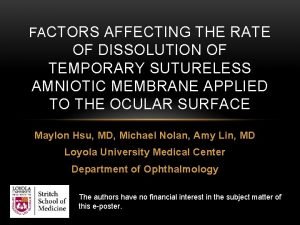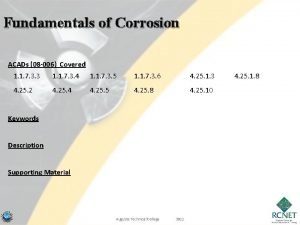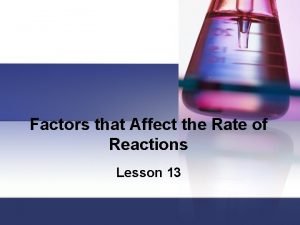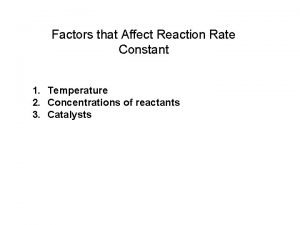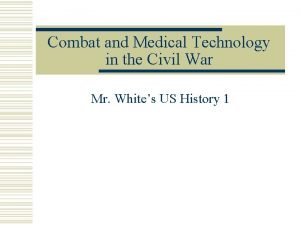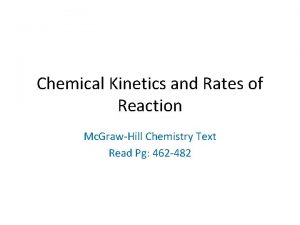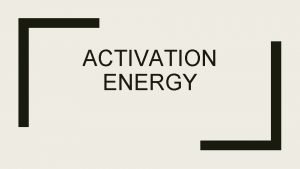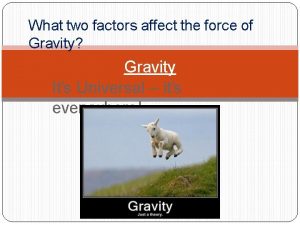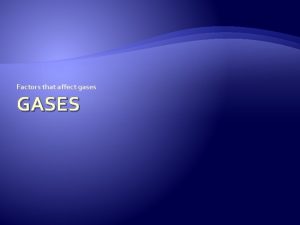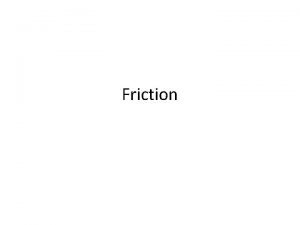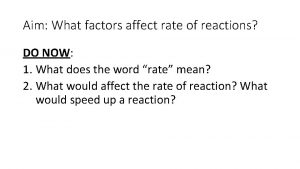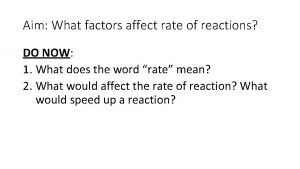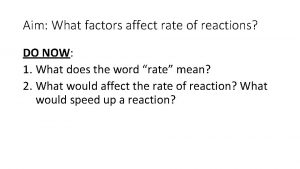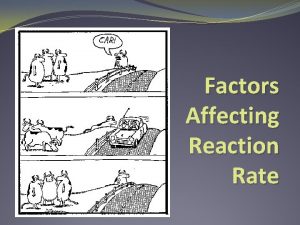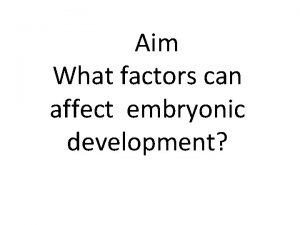Aim What factors can affect the rate of











- Slides: 11

Aim: What factors can affect the rate of a chemical reaction? Do Now: 1. Take out a calculator and reference tables. 2. What does the word kinetic mean?

Collision Theory • For a reaction to occur, particles must collide in a specific manner. • Factors affecting rates of collision include: 1. Nature of the reactants 2. Concentration 3. Surface Area 4. Pressure 5. The presence of a catalyst 6. Temperature

Factors affecting rates of reaction 1. Nature of reactants – generally covalently bonded reactants are slower to react than ionic substances because they have more bonds to break which means they must have more energy. 2. Concentration - Most chemical reactions will take place faster if the concentration of one or more of the reactants is increased. Why? 3. Surface Area – When more of the surface area of a substance is exposed, there are more chances for the reactant particles to collide thus increasing the reaction rate.

Factors affecting rates of reaction 4. Pressure – Affects mainly gases. An increase in pressure will increase the rate of reaction. 5. Presence of a catalyst – Catalysts are substances that increase the rate of reaction by providing an easier pathway for a reaction. Catalysts take part in a reaction but remain unchanged. Therefore, they can be used and reused. 6. Temperature – Reactants with a higher temperature will have more kinetic energy. Therefore, they will have more collisions which will cause the reaction to occur faster.

Heat of Reaction • The reactants and products in a given reaction have their own heat of reaction. • The heat of reaction is the amount of heat given off or absorbed in a chemical reaction. Heat of reaction is the difference in heat content of the products and reactants. The symbol for heat of reaction is shown as ∆H. It can be calculated using the following formula: ∆H = Hproducts - Hreactants • Why is the heat contained by the reactants and products different?

Exothermic Reactions • Is ∆H positive or negative when the reaction is exothermic? • If the products have less potential energy or heat content than the reactants, heat is given off, and it is an exothermic reaction. ∆H = negative.

Endothermic Reactions • Is ∆H positive or negative when the reaction is endothermic? • If the products have more potential energy or heat content than the reactants, heat is absorbed, and it is an endothermic reaction. ∆H = positive.

Using Table I • Table I lists heat of reaction for different reactions. We can use this table to tell whether a reaction is exothermic or endothermic as well. • Example: What is the heat of reaction for the following reactions? 2 C(s) + 3 H 2(g) C 2 H 6(g) C 2 H 5 OH(l) + 3 O 2(g) 2 CO 2(g) + 3 H 2 O(l)

Activation energy • Activation energy is the smallest amount of energy needed to form an activated complex. • What’s an activated complex? • An activated complex is the result of a collision between the reactants in a chemical reaction. It is temporary and will either break apart and reform the reactants or rearrange and form new products.

Parts of a Potential Energy Diagram

Activity/Homework • Review Book pages 137 -141. Copy and answer question 1 -17.
 Maylon hsu md
Maylon hsu md What factors affect rate of diffusion
What factors affect rate of diffusion What factors affect the rate of corrosion
What factors affect the rate of corrosion Factors that affect the rate of reactions
Factors that affect the rate of reactions Reaction rate constant
Reaction rate constant Emmure definition
Emmure definition How did the minie-ball affect the casualty rate of the war?
How did the minie-ball affect the casualty rate of the war? Maxwell boltzmann distribution catalyst
Maxwell boltzmann distribution catalyst How to calculate activation energy
How to calculate activation energy How does literacy rate affect the standard of living
How does literacy rate affect the standard of living What two factors determine the force of gravitational pull?
What two factors determine the force of gravitational pull? What factors affect the weather
What factors affect the weather
